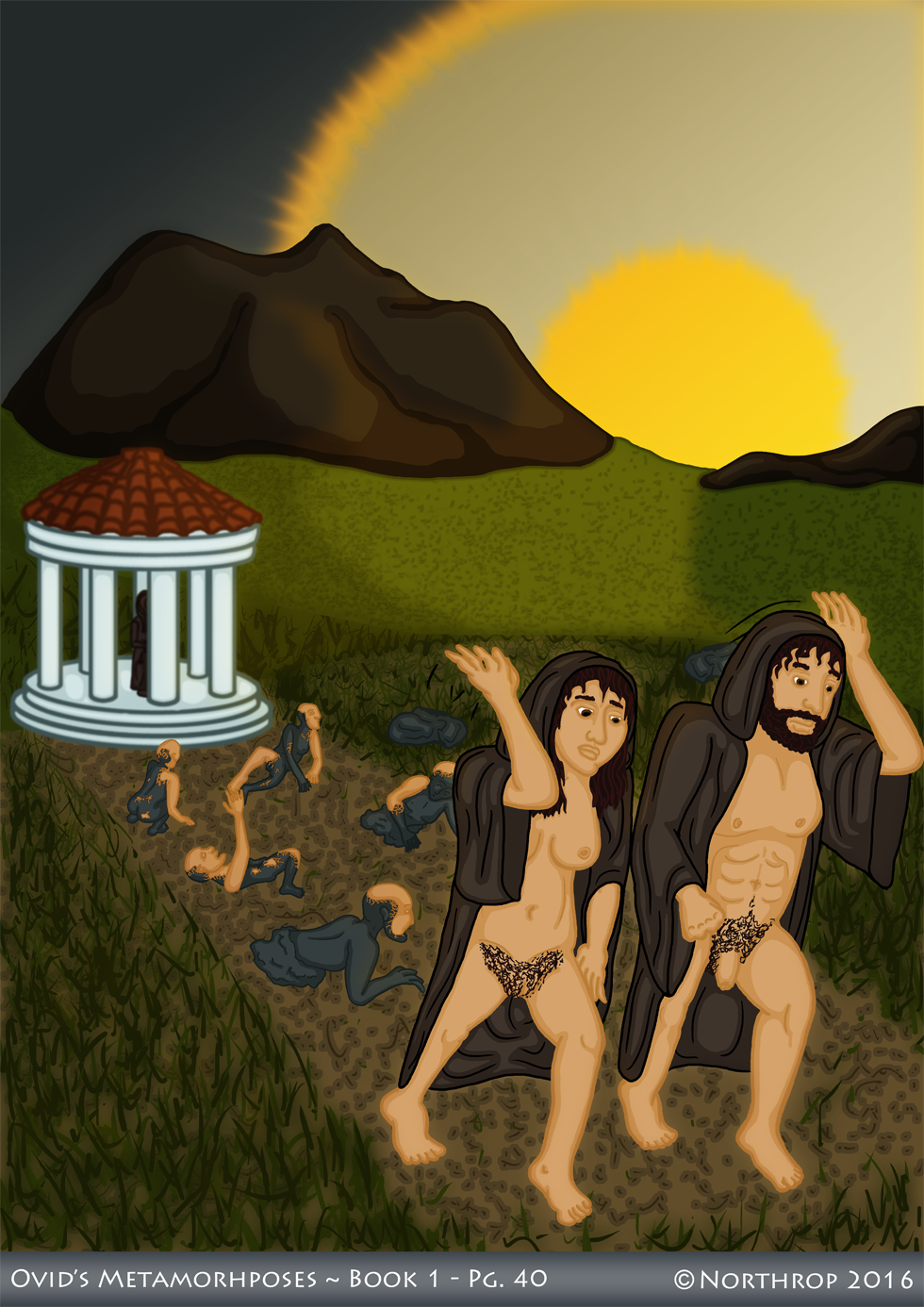Met. 1.403-6 – Like a sculpture taking shape…
mox ubi creuerunt naturaque mitior illis
contigit, ut quaedam, sic non manifesta, videri
forma potest hominis, sed uti de marmore coepta,
non exacta satis rudibusque simillima signis.
(Met. 1.403-6)
when soon they became distinguishable and a milder nature
took hold of them, as when some shape of a person, though it is not clear
can be seen after a sculpture is begun from marble,
it is not exact enough, but is similar to a rough impression.
Ah, it is nice to end on a round number, isn’t it? Welcome to page 40 and the conclusion to the main part of the Deucalion and Pyrrha story. We still have a little ‘epilogue’ to get through before moving on to “Apollo and Python”, but this is the last we’ll see of our seafaring couple. You’ll notice I actually drew more than is described in the four lines quoted above. That is because some of the information in the next 10 lines is better communicated in the epilogue, although Ovid is also describing what is happening. Such are the vicissitudes of the Metamorphoses! Ovid cannot really keep himself focused on one poetic mode, and kind of jumps between scientific didaxis (educational poetry), mythology and of course erotic (his “native” genre; like I said, Apollo and Daphne are coming soon – I promise!) The excursus (“tangent”) into scientific language I thought fit better in a different format than the one we are using to tell the story of the survivors. That, and I really liked the idea of a solemn, silent vision of Deucalion and Pyrrha heaving the transforming stones.

Discussion ¬